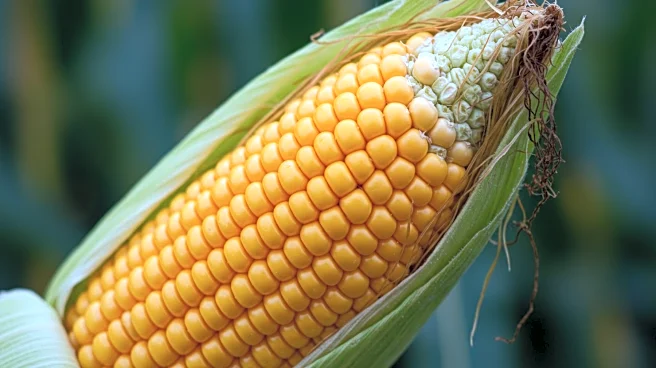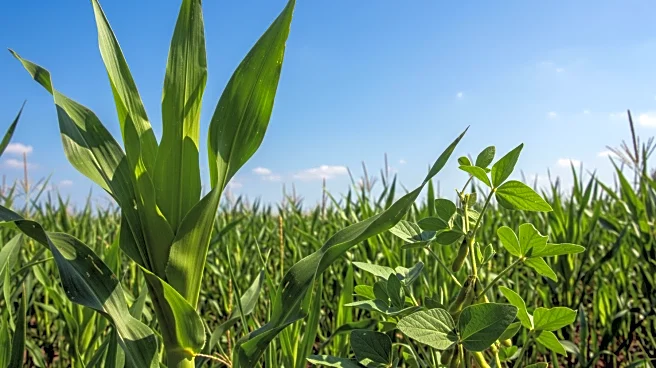What is the story about?
What's Happening?
The USDA Crop Progress report released on August 11 highlights the dented growth stage of corn across 15 states, with North Carolina leading at 83%. This stage marks a critical phase in corn development, affecting yield and quality. Texas follows with 69% of its corn reaching this stage, aligning with the five-year average. Other states like Tennessee, Kentucky, and Missouri show significant progress compared to previous weeks, with percentages ranging from 24% to 48%. The report also provides ratings for corn conditions, with states like Iowa and Nebraska showing high percentages of good and excellent ratings, while others like Colorado and Ohio report lower percentages. The report notes that Indiana, Michigan, and Pennsylvania have yet to report dented growth stage, which is typically expected by this time based on historical averages.
Why It's Important?
The dented growth stage is crucial for assessing the potential yield and quality of the corn crop, impacting agricultural markets and food supply chains. States with higher percentages of dented corn may anticipate better yields, which can influence local economies and commodity prices. Conversely, states with lower percentages or poorer condition ratings may face challenges in meeting production expectations, potentially affecting farmers' income and regional agricultural stability. The varied conditions across states highlight the importance of monitoring crop progress to anticipate market fluctuations and inform policy decisions related to agriculture and food security.
What's Next?
As the season progresses, states that have not yet reported dented corn growth are expected to do so, which will provide a more comprehensive view of the national corn crop status. Stakeholders, including farmers, agricultural businesses, and policymakers, will closely monitor these developments to adjust strategies for harvesting, marketing, and pricing. The USDA will continue to release updates, which will be critical for planning and decision-making in the agricultural sector.
AI Generated Content
Do you find this article useful?














